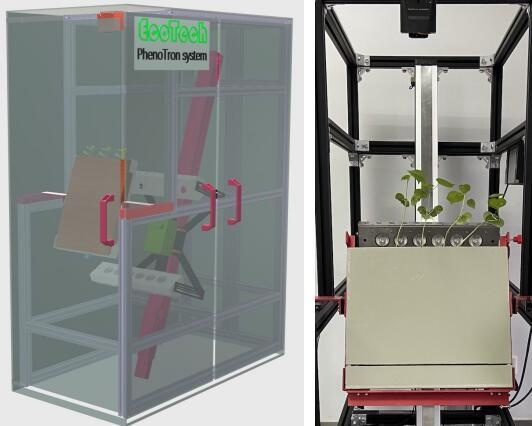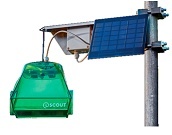參考價(jià)格
面議型號(hào)
品牌
產(chǎn)地
捷克樣本
暫無(wú)看了FL3500水下原位葉綠素?zé)晒鈨x的用戶又看了
 留言詢價(jià)
留言詢價(jià)

虛擬號(hào)將在 180 秒后失效
使用微信掃碼撥號(hào)
FL3500水下原位葉綠素?zé)晒鈨x
FL3500水下原位葉綠素?zé)晒鈨x設(shè)計(jì)用來(lái)測(cè)量水下生物熒光的——水下植物,,珊瑚或者海藻,。用于測(cè)量的水下探頭配有用于水下操作的特殊支架。**測(cè)量深度為水下1m,。其光學(xué)測(cè)量頭內(nèi)置3組LED光源和1個(gè)500 kHz/16位 AD 轉(zhuǎn)換的PIN二極管信號(hào)檢測(cè)器,。AD轉(zhuǎn)換的增益和積分時(shí)間可以通過(guò)軟件控制,。檢測(cè)器測(cè)量葉綠素?zé)晒庑盘?hào)的時(shí)間分辨率可高達(dá)4 μs 。
應(yīng)用領(lǐng)域
· 植物光合特性和代謝紊亂篩選
· 生物和非生物脅迫的檢測(cè)
· 植物抗脅迫能力或者易感性研究
· 代謝混亂研究
· 長(zhǎng)勢(shì)與產(chǎn)量評(píng)估
· 植物——微生物交互作用研究
· 植物——原生動(dòng)物交互作用研究
典型樣品
· 藻類,、浮游植物
· 沉水或浮水植物葉片
· 珊瑚等
功能特點(diǎn):
· 具備雙通道測(cè)量控制,,可以與各種測(cè)量單元如標(biāo)準(zhǔn)版、快速版,、葉夾式及水下測(cè)量頭等配合使用,,各版本的測(cè)量頭可互換使用
· 內(nèi)置多種可用戶自行修改的測(cè)量程序,涵蓋目前國(guó)際上對(duì)于葉綠素?zé)晒獾母鞣N一般性研究和深入機(jī)理研究
· 配備水下式探頭,,可在**1米深的水下進(jìn)行水體植物葉綠素?zé)晒獾脑粶y(cè)量
技術(shù)參數(shù):
· 實(shí)驗(yàn)程序:葉綠素?zé)晒庹T導(dǎo)測(cè)量,;PAM(脈沖調(diào)制)測(cè)量;OJIP快速熒光動(dòng)力學(xué)測(cè)量,;QA–再氧化動(dòng)力學(xué),;S狀態(tài)轉(zhuǎn)換;葉綠素?zé)晒獯銣?/span>
熒光參數(shù):F0,,Fm,,Fv,F0’,,Fm’,,Fv’,QY(II),,NPQ,,ΦPSII,Fv/Fm,,Fv’/Fm’,,Rfd,qN,,qP,,ETR等50多項(xiàng)葉綠素?zé)晒鈪?shù)與圖像;OJIP曲線與F0,、FJ,、Fi、Fm,、Fv,、VJ、Vi,、Fm / F0,、Fv / F0、Fv / Fm,、M0,、Area,、Fix Area、SM,、SS,、N、Phi_P0,、Psi_0、Phi_E0,、Phi_D0,、Phi_Pav、ABS / RC,、TR0 / RC,、ET0 / RC、DI0 / RC等20多項(xiàng)相關(guān)參數(shù)
· 時(shí)間分辨率(采樣頻率):高靈敏度檢測(cè)器,,時(shí)間分辨率達(dá)4μs
· 控制單元:雙通道通用高度精確性自動(dòng)微處理器,,可以與各種測(cè)量單元如標(biāo)準(zhǔn)版、快速版,、葉夾式及水下測(cè)量頭等配合使用(無(wú)需另行購(gòu)買控制單元)
· 測(cè)量光閃:標(biāo)準(zhǔn)為波長(zhǎng)617nm的橙光或455nm的藍(lán)光,,光閃時(shí)間2–5μs
· 單翻轉(zhuǎn)飽和光閃:標(biāo)準(zhǔn)光源為630nm的紅光,光閃時(shí)間20–50μs
· 持續(xù)光化學(xué)光:標(biāo)準(zhǔn)為630nm的紅光,,**光強(qiáng)1500 μmol(photons)/m2.s
· 每組lED光源強(qiáng)度和時(shí)間可通關(guān)軟件調(diào)控,,同時(shí)光源可根據(jù)研究要求選配
· **測(cè)量水深:1m
· FluorWin軟件:定義或創(chuàng)建實(shí)驗(yàn)方案、光源控制設(shè)置,、數(shù)據(jù)輸出,、分析處理和圖表顯示
典型應(yīng)用:熒光誘導(dǎo)過(guò)程分析
產(chǎn)地:捷克
參考文獻(xiàn):
§ Functioning of the Bidirectional Hydrogenase in Different Unicellular Cyanobacteria, é Kiss,, et al,, 2013. Research for Food, Fuel and the Future
§ Excess Ca2+does not alleviate but increases the toxicity of Hg2+ to photosystem II in Synechocystis sp.(Cyanophyta),, D Zhang,, et al, 2013. Ecotoxicology and environmental safety
§ Inhibition of the Water Oxidizing Complex of Photosystem II and the Reoxidation of the Quinone Acceptor QA? by Pb2+,, A Belatik,, et al, 2013. PloS one
§ Destabilization of the Oxygen Evolving Complex of Photosystem II by Al3+,, I Hasni,, et al, 2013. Photochemistry and Photobiology
§ Effects of Sb (V) on growth and chlorophyll fluorescence of Microcystis aeruginosa (FACHB–905),,S Wang,, et al,, 2012. Current Microbiology
§ Correlations between the temperature dependence of chlorophyll fluorescence and the fluidity of thylakoid membranes, A Tovuu,, et al,, 2012. Physiologia Plantarum
§ Developmental Defects in Mutants of the PsbP Domain Protein5 inArabidopsis thaliana. JL Roose, et al,, 2011. PloS one
§ Inhibition of photosystems I and II activities in salt stress–exposed Fenugreek (Trigonella foenum graecum). M Zaghdoudi,, et al, 2011. Journal of Photochemistry and Photobiology B: Biology
§ Productivity correlated to photobiochemical performance of Chlorella mass cultures grown outdoors in thin–layer cascades. J Masojídek,, et al,, 2011. Journal of Industrial Microbiology & Biotechnology
§ Binding Stoichiometry and Affinity of the Manganese–Stabilizing Protein Affects Redox Reactions on the Oxidizing Side of Photosystem II. JL Roose, et al,, 2011. Biochemistry
暫無(wú)數(shù)據(jù),!
 FL3500水下原位葉綠素?zé)晒鈨x的工作原理介紹,?
FL3500水下原位葉綠素?zé)晒鈨x的工作原理介紹,? FL3500水下原位葉綠素?zé)晒鈨x的使用方法?
FL3500水下原位葉綠素?zé)晒鈨x的使用方法? FL3500水下原位葉綠素?zé)晒鈨x多少錢(qián)一臺(tái),?
FL3500水下原位葉綠素?zé)晒鈨x多少錢(qián)一臺(tái),? FL3500水下原位葉綠素?zé)晒鈨x使用的注意事項(xiàng)
FL3500水下原位葉綠素?zé)晒鈨x使用的注意事項(xiàng) FL3500水下原位葉綠素?zé)晒鈨x的說(shuō)明書(shū)有嗎,?
FL3500水下原位葉綠素?zé)晒鈨x的說(shuō)明書(shū)有嗎,? FL3500水下原位葉綠素?zé)晒鈨x的操作規(guī)程有嗎?
FL3500水下原位葉綠素?zé)晒鈨x的操作規(guī)程有嗎? FL3500水下原位葉綠素?zé)晒鈨x的報(bào)價(jià)含票含運(yùn)費(fèi)嗎,?
FL3500水下原位葉綠素?zé)晒鈨x的報(bào)價(jià)含票含運(yùn)費(fèi)嗎,? FL3500水下原位葉綠素?zé)晒鈨x有現(xiàn)貨嗎,?
FL3500水下原位葉綠素?zé)晒鈨x有現(xiàn)貨嗎,? FL3500水下原位葉綠素?zé)晒鈨x包安裝嗎?
FL3500水下原位葉綠素?zé)晒鈨x包安裝嗎? 手機(jī)版:
手機(jī)版:





